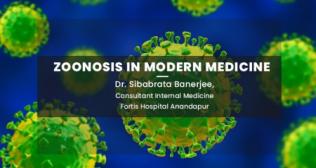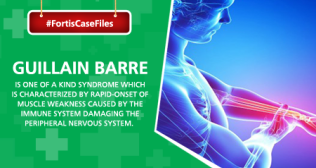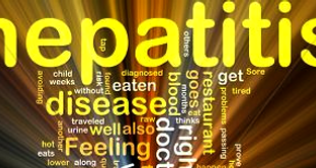
How Does Anaesthesia Work?
Anaesthesia is the use of drugs or other substances to block pain or sensation during surgery or other medical procedures. Anaesthesia can be classified into two main types: local anaesthesia and general anaesthesia. In this blog post, we will explain how these types of anaesthesia work, what are the different types of anaesthetics, and what are the possible side effects of anaesthesia.
Local Anaesthesia
Local anaesthesia is the use of drugs that numb a specific part of the body, such as a tooth, an eye, or a skin area. Notably, It does not affect the brain or the consciousness of the patient and can be administered through various methods including, injection, spray, cream, or patch. Local anaesthesia is usually used for minor or outpatient procedures, such as dental work, biopsies, or stitches offering targeted relief. The most common drugs used for local anaesthesia are lidocaine, bupivacaine, and ropivacaine. They work by blocking the transmission of nerve impulses that carry pain signals from the affected area to the brain. Additionally, Local anaesthetics can also cause temporary numbness, tingling, or weakness in the area where they are applied.
General Anaesthesia
General anaesthesia is the use of drugs that induce a state of unconsciousness and loss of sensation in the whole body. It is used for major or intricate surgeries, such as heart surgery, brain surgery, or organ transplant. General anaesthesia can be administered by inhalation, injection, or infusion.
The most common drugs used for general anaesthesia are propofol, sevoflurane, and ketamine and they act on the central nervous system, affecting various brain regions and neurotransmitters that are involved in regulating consciousness, memory, pain perception, and movement. This results in a loss of awareness, amnesia, analgesia, and immobility in the patient. The effects of general anaesthesia are reversible, and the patient usually wakes up within a few hours after the anaesthetic drugs are stopped or reduced.
Types of Anaesthesia
Anaesthetists employ a spectrum of anaesthetics, each catering to specific procedures, durations, and patient conditions. This diversity ensures a tailored approach, optimising both effectiveness and safety.
Some common types of anaesthetics include:
Spinal anaesthesia: This is a type of local anaesthesia that involves injecting a drug into the fluid around the spinal cord. This blocks the pain and sensation from the lower half of the body, such as the legs, pelvis, or abdomen. Spinal anaesthesia is often used for surgeries involving the lower extremities, such as hip replacement, knee surgery, or caesarean section.
Epidural anaesthesia: This is a type of local anaesthesia that involves inserting a thin tube (catheter) into the space around the spinal cord. A drug is then delivered through the catheter to numb the lower half of the body. Epidural anaesthesia is similar to spinal anaesthesia, but it allows for more control over the level and duration of the numbness. Epidural anaesthesia is often used for labour and delivery, as well as for some surgeries involving the lower extremities.
Regional anaesthesia: This is a type of local anaesthesia that involves injecting a drug near a cluster of nerves that supply a specific region of the body, such as an arm, a hand, or a foot. This blocks the pain and sensation from that region, while leaving the rest of the body unaffected. Regional anaesthesia is often used for surgeries involving the upper extremities, such as shoulder surgery, elbow surgery, or wrist surgery.
Monitored anaesthesia care (MAC): Monitored anaesthesia involves giving a sedative drug to the patient, along with a local anaesthetic to the site of the procedure. This reduces the anxiety and discomfort of the patient, while allowing them to remain awake and responsive. MAC is often used for minor or diagnostic procedures, such as colonoscopy, endoscopy, or biopsy.
Balanced anaesthesia: This is a type of general anaesthesia that involves using a combination of drugs to achieve the desired level of unconsciousness, pain relief, and muscle relaxation. Balanced anaesthesia allows for a smoother and safer anaesthetic experience, as well as a faster recovery. It is often used for major or complex surgeries, such as heart surgery, brain surgery, or organ transplant.
These variations allow anaesthetists to tailor their approach based on the nature and duration of the procedure, the patient's medical history and preferences, and their own professional judgement.
Anaesthesia Side Effects
Anaesthesia is generally safe and effective, but it can also have some potential side effects. Some of the common side effects of anaesthesia are:
Nausea and vomiting: This is one of the most common side effects of anaesthesia, especially after general anaesthesia. It can be caused by the drugs used for anaesthesia, the type and duration of the surgery, or the patient’s individual response. Nausea and vomiting can be treated with anti-emetic drugs, fluids, and rest.
Sore throat and hoarseness: Often associated with general anaesthesia, it can be caused by the insertion of a tube (endotracheal tube) into the throat to help with breathing during anaesthesia. Sore throat and hoarseness can be treated with lozenges, ice chips, and warm drinks.
Headache and drowsiness: Common after spinal or epidural anaesthesia, it can be caused by the leakage of fluid from the puncture site in the spine, or by the drugs used for anaesthesia. Headache and drowsiness can be treated with painkillers, fluids, and caffeine.
Shivering and chills: This is a common side effect of anaesthesia, especially after general anaesthesia. It can be caused by the lowering of the body temperature during anaesthesia, or by the drugs used for anaesthesia. Shivering and chills can be treated with warm blankets, fluids, and drugs.
Allergic reactions: This is a rare but serious side effect of anaesthesia. It can be caused by an unexpected or severe reaction to the drugs used for anaesthesia, or to other substances used during the surgery, such as latex or iodine. Allergic reactions can manifest as skin rashes, hives, itching, swelling, difficulty breathing, or low blood pressure. Allergic reactions can be treated with antihistamines, steroids, and adrenaline.
In conclusion, anaesthesia stands as a vital and invaluable component of modern medicine, facilitating life-saving and life-improving surgeries and procedures without subjecting patients to undue pain or suffering. Its diverse types and carefully selected anaesthetics, combined with vigilant monitoring and patient cooperation, contribute to the success of surgical interventions. At Fortis Healthcare, we are committed to upholding the highest standards in anaesthesia practices and treatments, ensuring patient safety and comfort throughout their medical journey.
By staying ahead of medical advancements in anaesthetic procedures and prioritising comprehensive patient care, we continue to be at the forefront of providing exceptional healthcare services. If you have any inquiries or concerns regarding anaesthesia, book an appointment today for the best possible care and service.















}}drupal-data/images/blog-lists.png)


